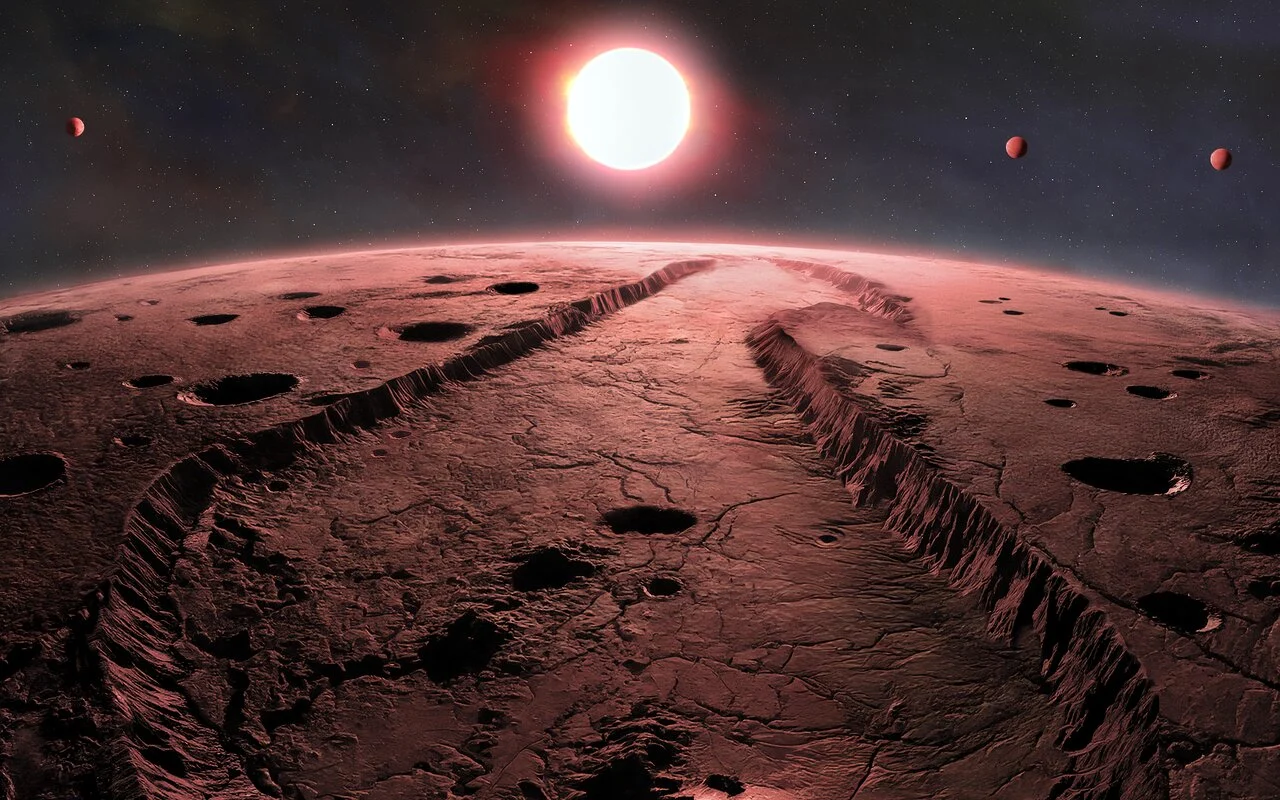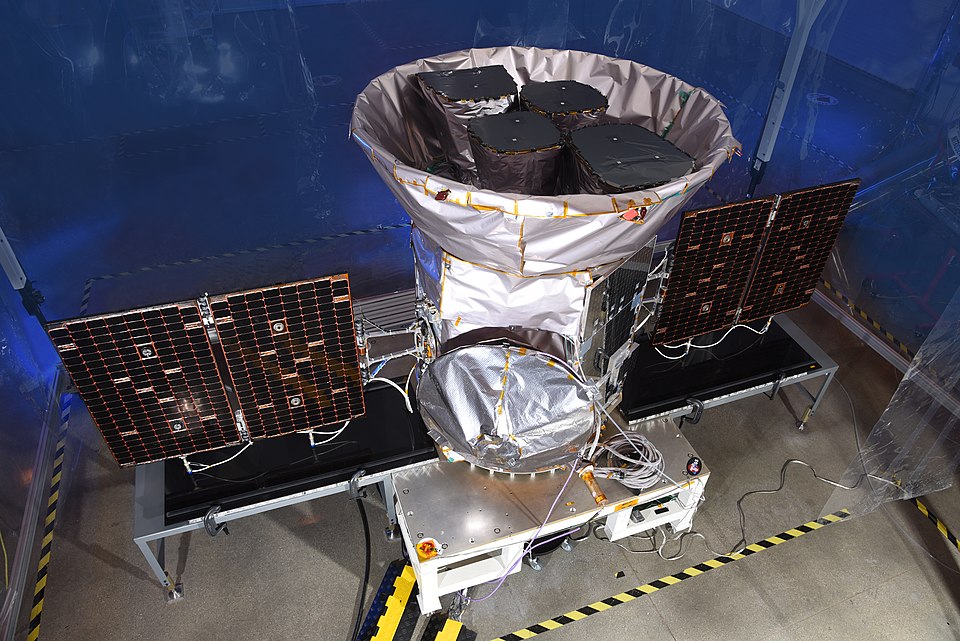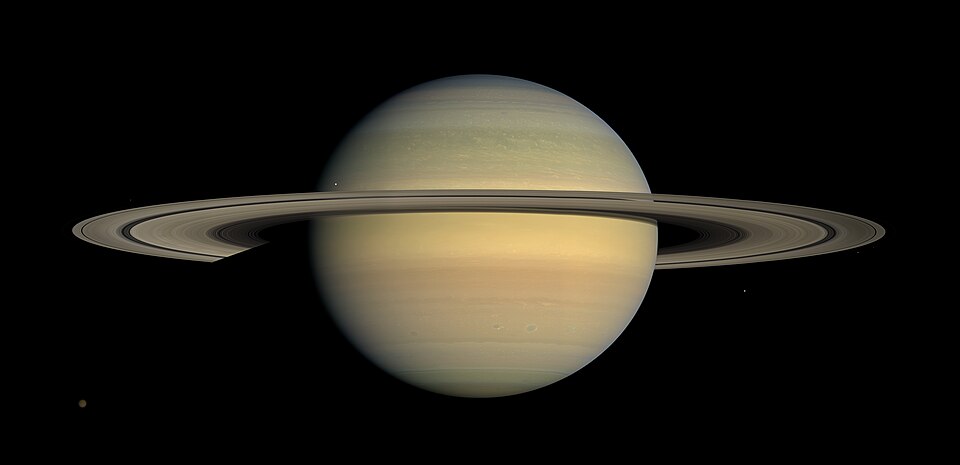Exoplanets—planets that orbit stars beyond our Solar System—have transformed our understanding of the universe. Since the first confirmed discovery in the 1990s, over 5,000 have been identified, ranging from scorching gas giants larger than Jupiter to rocky, Earth-sized worlds that may lie in the habitable zone of their stars. These alien worlds come in astonishing variety, with bizarre atmospheres, extreme temperatures, and unexpected orbital patterns. Studying exoplanets not only helps probe the diversity of planetary systems but also brings us closer to answering one of humanity's oldest questions: are we alone in the universe?
 Artist illustration of exoplanet around Barnard's Star
Artist illustration of exoplanet around Barnard's Star
Among the instruments hunting exoplanets is NASA's Transiting Exoplanet Survey Satellite (TESS,) a space-based observatory that looks for these alien worlds by monitoring the brightness of of stars. Launched in 2018, TESS uses the transit method—detecting the tiny dips in starlight that occur when a planet crosses in front of its host star—to identify new worlds beyond our Solar System. Unlike its predecessor Kepler, which focused on a narrow patch of sky, TESS scans nearly the entire sky, targeting bright, nearby stars that make follow-up observations easier. So far, TESS has discovered thousands of planet candidates, including Earth-sized and potentially habitable worlds, making it a cornerstone in the search for life beyond Earth.
 Transiting Exoplanet Survey Satellite aka TESS (Credit : NASA)
Transiting Exoplanet Survey Satellite aka TESS (Credit : NASA)
A team of astronomers led by Tsubasa Umetani from the Tokyo Metropolitan University has started to explore whether it might be possible to detect rings around exoplanets. Previous attempts have involved photometric and spectroscopic methods by analyzing light curve distortions, scattering effects, spectral anomalies, and velocity shifts. The attempts have however proven to be inconclusive. Their detectability depends upon ring size, tilt, and composition, with icy, tilted rings being easier to spot than compact, rocky ones affected by strong tidal forces.
Instead the team focuses on searching for new ringed exoplanet candidates using TESS photometric data, focusing on 308 close-in planets selected for having potential ring signals above the noise level—five times more than in previous analyses. The team developed a process to clean the light curves and compared ringed and ringless transit models to detect subtle ring features. Their approach includes model fitting, data preprocessing, and comparison with earlier Kepler results, aiming to refine detection methods and guide future research.
 Scientists are hunting for exoplanets with rings and hope to be able to find some that resemble our own ringed wonder, Saturn (Credit : NASA)
Scientists are hunting for exoplanets with rings and hope to be able to find some that resemble our own ringed wonder, Saturn (Credit : NASA)
They identified six exoplanet systems where ringed models fit the data better than ringless ones, but visual inspection found no clear evidence of rings. Based on this result, the team set upper limits on ring size for 125 TESS Objects of Interest, concluding that rings larger than 1.8 times the planet's radius are rare, occurring in less than 2% of cases. The lack of detections may be due to tidal forces damping ring tilt, especially in short-period planets. However, variations in transit depth from ring precession could make rings easier to detect in longer-period planets. The researchers highlight promising TESS and Kepler targets and note that ongoing TESS observations and the future PLATO mission will enhance future ring detection efforts.
While the search for ringed exoplanets has yet to yield definitive discoveries, studies like this one mark an important step forward in our ability to detect and understand complex planetary systems beyond our own. As observational techniques improve and missions like TESS continue to deliver high-precision data—soon to be complemented by ESA's PLATO mission—the chances of spotting distant ring systems, perhaps even analogous to Saturn, grow steadily stronger.
 Universe Today
Universe Today
